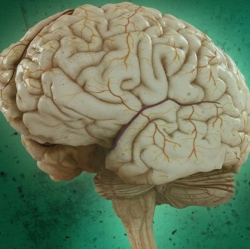
You may have seen the “connectome” map of the major networks between different functional areas of the human brain. It raises a lot of questions: How does this map relate to your brain? Do these connections persist over months or more? Do they vary with different mental conditions, moods?
These questions obsessed Stanford psychologist Russell Poldrack, leading to his “MyConnectome project.” In the noble DIY tradition of Marie Curie, Jonas Salk, and Albert Hoffman, he started off his day by climbing into an MRI machine and scanning his brain for 10 minutes Tuesdays and Thursdays every week for a year and a half, making his brain the most studied in the world. He also fasted and drew blood on Tuesdays for testing with metabolomics (chemical fingerprints in biological fluids) and genomics (gene tests, performed by 23andMe).
Here is some of what he found out:
His connectivity was surprisingly consistent, which is good news for researchers studying differences between healthy brains and those of patients with neurological disorders that might suffer from disrupted connectivity, such as schizophrenia or bipolar disorder.
There was a strong correlation between brain activity and changes in the expression of many different families of genes. The expression of genes related to inflammation and immune response matched Poldrack’s psoriasis flare-ups, for example.
Fasting with no caffeine on Tuesdays radically changed the connection between the somatosensory motor network and the higher vision network: it grew significantly tighter without caffeine.
“That was totally unexpected, but it shows that being caffeinated radically changes the connectivity of your brain,” Poldrack said. “We don’t really know if it’s better or worse, but it’s interesting that these are relatively low-level areas.
It may well be that I’m more fatigued on those days, and that drives the brain into this state that’s focused on integrating those basic processes more.”
